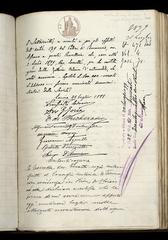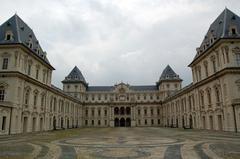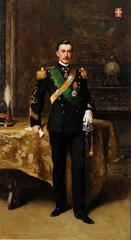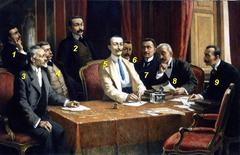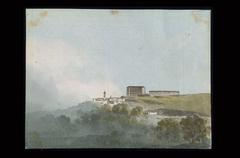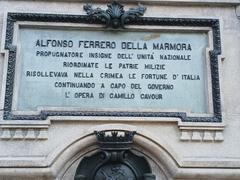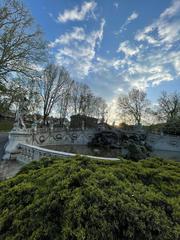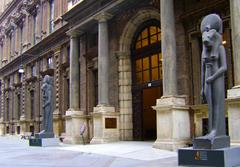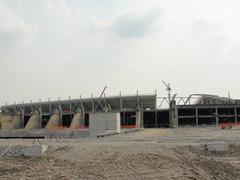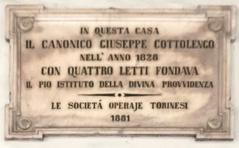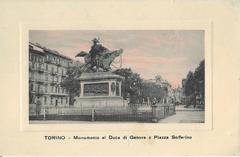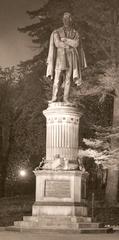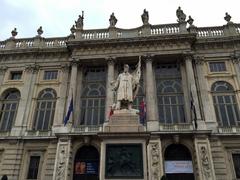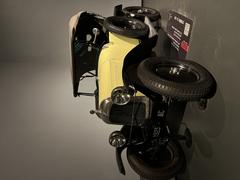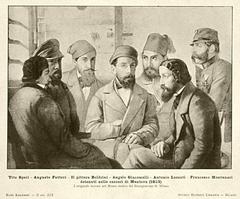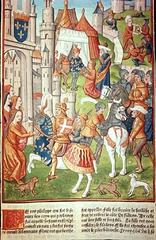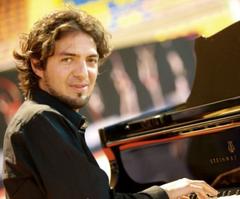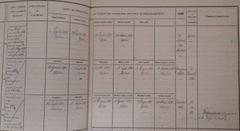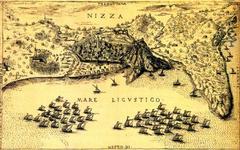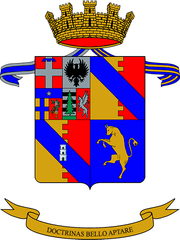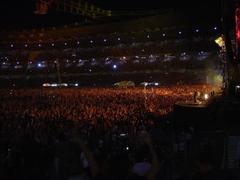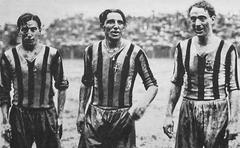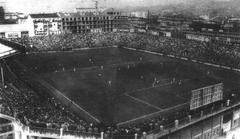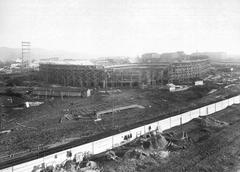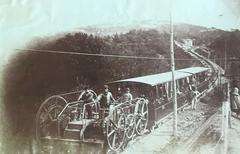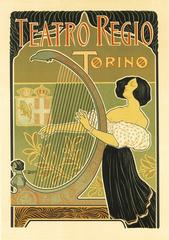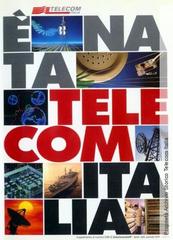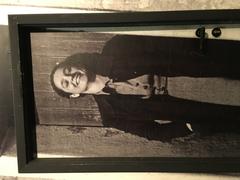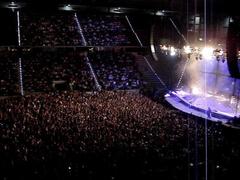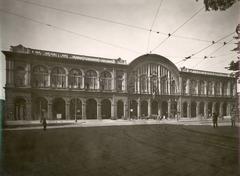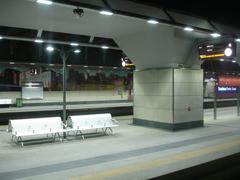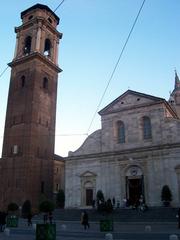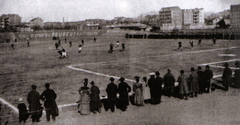Palazzo Siccardi: Visiting Hours, Tickets, and Historical Significance in Turin, Italy
Date: 14/06/2025
Introduction: Why Visit Palazzo Siccardi?
Nestled in the heart of Turin’s historic center, Palazzo Siccardi (also known as Casa Siccardi) stands as a remarkable testament to the city’s layered history. Built atop the remains of a Roman domus, this 17th-century palace reflects centuries of urban evolution—from Roman times through the Baroque era to its vibrant present as the home of the Biblioteca Civica Torino Centro. The site’s architectural details and artistic treasures, particularly its Baroque portal and frescoes by Domenico Guidobono, offer visitors a window into the elegance and intellectual spirit of Turin’s past.
This comprehensive guide details everything you need to know about visiting Palazzo Siccardi: from practical information on hours and tickets to insights into its artistic, historical, and cultural significance. Whether you are a history buff, architecture enthusiast, or simply curious about Turin’s hidden gems, Palazzo Siccardi promises an enriching experience (MuseoTorino; Biblioteca Civica Torino Centro; Turin Historical Sites Guide).
Table of Contents
- Introduction
- Historical Overview
- Architectural and Artistic Highlights
- Biblioteca Civica Torino Centro
- Practical Visitor Information
- Cultural Context and Urban Significance
- Nearby Attractions and Itineraries
- Frequently Asked Questions (FAQ)
- Conclusion and Recommendations
- Further Reading and Sources
Historical Overview: From Roman Origins to Baroque Splendor
Roman and Medieval Roots
The site of Palazzo Siccardi was originally occupied by a grand Roman domus, notable for advanced features such as underfloor heating. Archaeological evidence—including ceramics and stoneware—suggests continuous occupation, with periods of abandonment and renewal spanning from the 5th century CE through the Middle Ages (MuseoTorino). During the early medieval period, new structures rose on the ancient remains, shaping the irregular urban fabric that still characterizes the area.
Formation of the Palazzo
By the 17th century, previously separate buildings at the corner of Vicolo Santa Maria and Via Barbaroux were unified into a single, irregularly shaped palazzo—a rarity in Turin’s mostly grid-like layout. The Carmelite Fathers of Santa Maria di Piazza owned the property before selling it in 1719 to Michele Antonio Siccardi, a prominent Piedmontese official. Between 1721 and 1722, architect Gian Giacomo Plantery transformed the complex into a Baroque residence, adorned by artists including Domenico Guidobono and master stonemasons Fontana and Aprile (BCT).
19th and 20th Century Changes
Through the 19th and 20th centuries, Palazzo Siccardi underwent subdivision, war damage, and adaptive reuse—including a period as the headquarters for publisher Andrea Viglongo. In the 1970s, the City of Turin acquired the property, initiating restoration projects that culminated in the full renovation completed in 2016. Today, it houses subsidized residential units and the Biblioteca Civica Torino Centro.
Architectural and Artistic Highlights
Baroque Portal and External Features
The palace’s most notable external feature is its Baroque entrance portal, skillfully sculpted with geometric motifs and telamons, and fitted with an original carved wooden door (MuseoTorino). The irregular plan reflects centuries of architectural adaptation.
Interior: Frescoes and Wooden Ceilings
Inside, visitors will find:
- Frescoes by Domenico Guidobono: Depicting lush landscapes, allegorical scenes, and classical motifs—showcasing the refined tastes of Turin’s aristocracy (Open House Torino).
- Painted Wooden Ceilings: Featuring vibrant colors and intricate geometric patterns.
- Juvarrian-Style Staircase: Supported by stone columns, reflecting the influence of architect Filippo Juvarra.
- Courtyard: A tranquil urban oasis with arcades and original stone paving, harmoniously connecting interior and exterior spaces.
Biblioteca Civica Torino Centro: Cultural Heart of the Palazzo
Since 2016, Palazzo Siccardi has been home to the Biblioteca Civica Torino Centro. The library not only offers a wide range of books and research materials but also preserves and interprets the building’s history through interpretive panels and exhibitions. It is a vibrant community hub, hosting readings, workshops, and cultural events throughout the year (BCT).
Practical Visitor Information
Location and Access
- Address: Piazzetta Università dei Mastri Minusieri 2, Turin.
- Getting There: Easily accessible from Piazza Castello and Via Garibaldi by foot. Public transport options include tram and bus lines serving the city center (HikersBay).
Visiting Hours and Admission
- Hours: Monday to Saturday, 9:00 AM to 7:00 PM. Closed Sundays and public holidays.
- Admission: Free entry to the library and palazzo. Guided tours and special exhibitions may require advance booking and a nominal fee (Open House Torino).
Guided Tours and Events
- Guided Tours: Occasional tours focus on architectural and historical features. Advance booking recommended via the library or tourism websites.
- Special Events: The palazzo hosts exhibitions, readings, and workshops. Check the official event calendar for the latest schedule.
Accessibility
The building has been renovated to maximize accessibility, including ramps and a modern glass elevator. Some historic areas may retain limited access; visitors with mobility needs should contact the library in advance.
Photography and Virtual Resources
- Photography: Allowed in public areas for personal use. Restrictions may apply during events or in certain rooms—always check with staff.
- Virtual Resources: While no official virtual tour exists, interpretive panels and bibliographies are available onsite and online. Key resources include the bibliography PDF.
Visitor Tips
- Most materials are in Italian; staff can often assist in English.
- Wear comfortable shoes for exploring the historic center.
- Consider combining your visit with nearby attractions for a full-day itinerary.
- Check for updates on hours or events before your visit.
Cultural Context and Urban Significance
Palazzo Siccardi illustrates Turin’s evolution from Roman outpost to Baroque capital and modern cultural city (World History Journal). Its preservation and adaptive reuse as a library and cultural venue demonstrate a successful model for integrating heritage conservation with contemporary civic life. The building’s association with figures like Michele Antonio Siccardi and later as a publisher’s headquarters adds to its rich narrative.
Nearby Attractions and Recommended Itineraries
Palazzo Siccardi’s central location makes it a perfect starting point for exploring Turin’s historical and cultural landmarks:
- Piazza Castello: The city’s main square.
- Palazzo Madama: UNESCO World Heritage Site and museum.
- Royal Palace of Turin: Former seat of the House of Savoy.
- Museo Egizio: World-renowned Egyptian museum.
- Via Garibaldi: One of Europe’s longest pedestrian streets, lined with shops and cafes.
Create a thematic route tracing Turin’s transformation from Roman times through the Baroque period, using Palazzo Siccardi as a focal point.
Frequently Asked Questions (FAQ)
Q: Do I need a ticket to visit Palazzo Siccardi?
A: No, admission is free. Guided tours or special events may require booking and a fee.
Q: What are the opening hours?
A: Monday to Saturday, 9:00 AM to 7:00 PM. Closed Sundays and public holidays.
Q: Is the palazzo accessible for people with disabilities?
A: Yes, the building features ramps and a modern elevator, though some historic areas may be challenging.
Q: Can I take photos inside?
A: Photography is generally permitted in public areas for personal use; check with staff for restrictions.
Q: How do I get there by public transport?
A: Numerous tram and bus lines serve nearby stops; the Porta Nuova metro station is about a 10-minute walk away.
Conclusion and Recommendations
Palazzo Siccardi offers a rare and intimate perspective on Turin’s historical and architectural evolution. Its beautifully restored Baroque features, historic frescoes, and tranquil courtyard make it a must-visit for anyone interested in the city’s heritage. With free admission, central location, and a vibrant calendar of cultural events, the palazzo is an accessible and rewarding destination for travelers of all interests.
Before your visit, check the official library website for updated hours and events. Enhance your experience by downloading the Audiala app for curated tours and real-time updates.
Further Reading and Sources
- MuseoTorino: Casa Siccardi
- Biblioteca Civica Torino Centro
- Bibliography on Palazzo Siccardi (PDF)
- Turin Historical Sites Guide
- Open House Torino: Palazzo Siccardi Library
- TorinoClick: Cultural Heritage and Palazzo Siccardi
- World History Journal: Turin’s Urban Evolution
- HikersBay: Turin Tourist Information
Images and directions are available on the official websites. For more travel inspiration, see our guides to Turin’s royal palaces and museums and top things to do in Turin.


